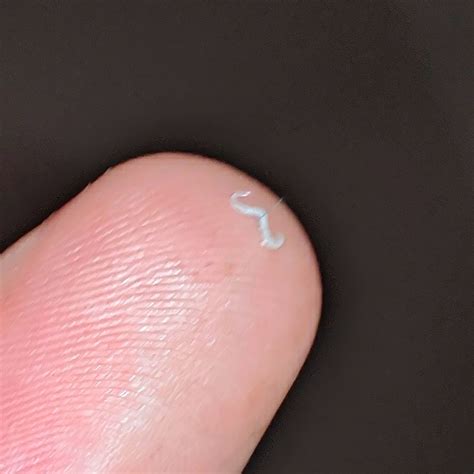Pinworms, also known as Enterobius vermicularis, are small, thin, white worms that can infect the intestines of humans, particularly in children. They are highly contagious and can cause significant discomfort, including anal itching, restlessness, and digestive issues. Checking for pinworms is a straightforward process that can be done at home or with the help of a healthcare professional. Here’s a comprehensive guide on how to check for pinworms:
Understanding Pinworm Infection
Before we dive into the methods of checking for pinworms, it’s essential to understand the basics of a pinworm infection. Pinworms lay their eggs around the anus, usually at night, which causes intense itching. This itching can lead to scratching, and if the hands are not properly washed after scratching, the eggs can be transferred to the mouth, leading to reinfection or the spread of infection to others.
Home Diagnostic Methods
There are a few methods you can use at home to check for pinworms:
Visual Inspection: Look for small, white, thread-like worms in the stool or around the anus. Pinworms are about 1⁄4 inch (about 6 mm) long and can be seen with the naked eye. They might be visible in the stool, on the toilet paper after wiping, or around the anal area, especially at night.
Tape Test: This is a simple and effective method to check for pinworm eggs. You will need a piece of clear tape. Here’s how to do it:
- In the morning, before bathing or using the toilet, press the sticky side of the tape against the skin around the anus.
- Then, remove the tape and stick it to a piece of paper or a slide.
- Take the tape to your doctor or a laboratory for examination under a microscope for pinworm eggs.
Stool Sample: Although less common for diagnosing pinworms due to the timing of egg-laying, a stool sample can sometimes reveal the presence of worms or eggs. This is more effectively done through a healthcare provider.
Medical Diagnostic Methods
If you suspect a pinworm infection and home methods are inconclusive, or if symptoms persist, consulting a healthcare provider is the next step. A healthcare provider may use the following methods to diagnose a pinworm infection:
Physical Examination: The healthcare provider may perform a physical examination, including an inspection of the anal area for signs of infection, such as redness or irritation.
Microscopic Examination: A sample from the tape test or a stool sample can be examined under a microscope for the presence of pinworm eggs or worms.
Questionnaire: Healthcare providers may ask about symptoms, such as itching around the anus, especially at night, and about the hygiene practices of the individual and the household.
Prevention and Treatment
Preventing the spread of pinworms involves good hygiene practices, including: - Washing hands frequently, especially after using the toilet and before eating. - Keeping fingernails short to prevent scratching and reduce the risk of transferring eggs. - Cleaning and disinfecting surfaces, especially in the bathroom and kitchen. - Washing bedding, towels, and clothing in hot water.
Treatment typically involves anti-parasitic medications, such as albendazole or mebendazole, which are prescribed by a healthcare provider. It’s crucial to follow the treatment instructions carefully and to treat all household members simultaneously to prevent reinfection.
FAQs
What are the common symptoms of a pinworm infection?
+Common symptoms include intense anal itching, restlessness, and digestive issues. The itching is usually worse at night and can lead to scratching, which may cause skin irritation.
How are pinworms spread?
+Pinworms are highly contagious and can be spread through direct contact with an infected person’s feces, or indirectly through contaminated food, water, or surfaces.
Can pinworm infections be prevented?
+Yes, prevention involves good hygiene practices, such as frequent hand washing, keeping fingernails short, and ensuring that everyone in the household practices good hygiene, especially after using the bathroom and before eating.
In conclusion, checking for pinworms can be done through simple home methods and, if necessary, through more detailed medical examinations. Understanding the signs of infection, how pinworms are spread, and how to prevent reinfection is crucial for managing and treating pinworm infections effectively. If you suspect that you or a family member has a pinworm infection, it’s important to consult with a healthcare provider for proper diagnosis and treatment.



